Blog
10 Essential Tips for Growing Carnivorous Plants (Beginner-Friendly Guide)
Carnivorous plants are fascinating, exotic, and surprisingly easy to grow—if you know what you’re doing! But if you’ve ever bought a Venus Flytrap only to watch it wither away in a few weeks, you’re not alone.
The biggest mistake people make? Treating these plants like regular houseplants!
Unlike typical greenery, carnivorous plants have specific needs when it comes to soil, water, and feeding. The good news? Once you understand their unique requirements, they can thrive in your home or garden for years.
Let’s dive into 10 essential tips for growing healthy carnivorous plants so you can avoid common mistakes and keep your insect-eating beauties alive and well!
1. Choose the Right Carnivorous Plant for Your Environment
Not all carnivorous plants are the same. Some thrive indoors, while others need outdoor conditions to survive. Choosing the right type for your environment is key to success. If you are new to growing carnivorous plants, it’s best to start with beginner-friendly species.
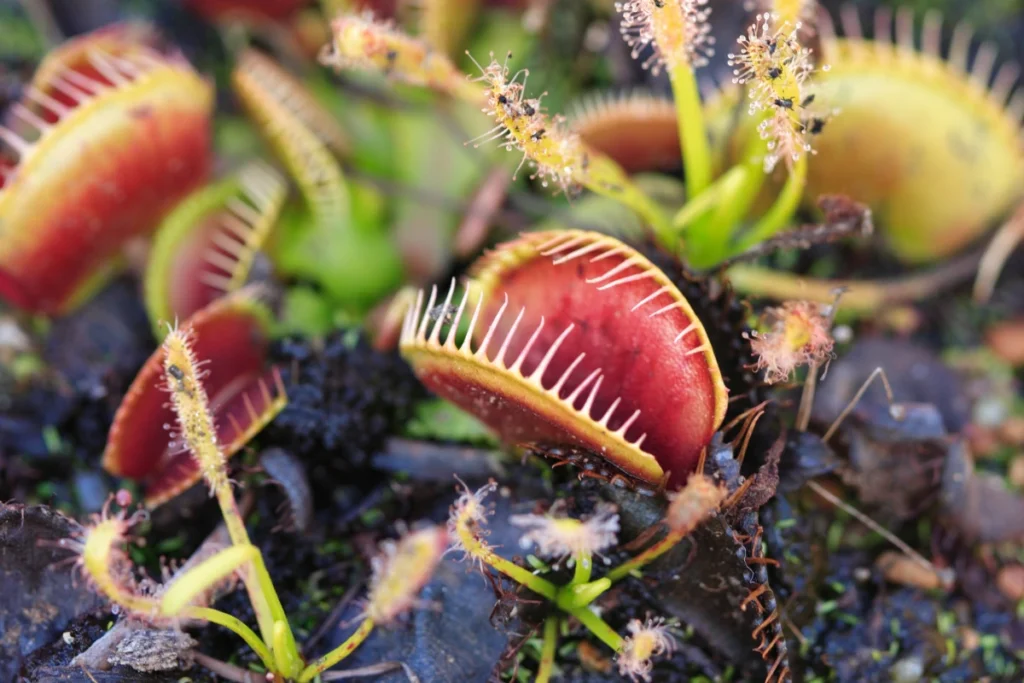
Best Carnivorous Plants for Beginners:
-
Venus Flytrap (Dionaea muscipula) – The most famous and fun to grow
-
Sundews (Drosera) – Sticky tentacles that trap insects
-
North American Pitcher Plants (Sarracenia) – Unique tube-like leaves that catch prey
Best for Indoor Growing:
-
Tropical Pitcher Plants (Nepenthes) – Require warmth and humidity
-
Butterworts (Pinguicula) – Good for catching small flying insects
Best for Outdoor Growing:
-
Sarracenia (Hardy Pitcher Plants) – Tolerates various weather conditions
-
Venus Flytrap – Can grow outdoors in mild climates with seasonal dormancy
Before buying a plant, research its habitat needs. Some require high humidity, while others need a winter dormancy period to survive.
2. Use the Right Soil – No Regular Potting Mix!

Carnivorous plants are not like your average houseplants—they thrive in nutrient-poor, acidic environments. Regular potting soil, compost, or anything with added fertilizers will overload them with minerals, which can be fatal. Instead, create the perfect low-nutrient, well-draining mix using:
-
Sphagnum Moss or Peat Moss – These organic materials mimic the boggy conditions that carnivorous plants love. Just make sure they’re free of additives or fertilizers!
-
Perlite or Silica Sand – These improve aeration and drainage, preventing root rot while keeping moisture levels just right.
-
Distilled Water or Rainwater Only – Tap water often contains minerals that can harm your plant, so always use pure, mineral-free water.
-
Avoid at all costs: Regular potting soil, Miracle-Gro, compost, or anything nutrient-rich. These will cause root burn, weaken your plant, and ultimately lead to its demise!
3. Water with Distilled or Rainwater Only
One of the most common reasons carnivorous plants die is improper watering. Tap water may be fine for most houseplants, but for these delicate species, it can be lethal. Minerals, chlorine, and fluoride found in tap water build up in the soil over time, damaging the plant’s roots and eventually killing it. To keep your carnivorous plant healthy, always use rainwater, distilled water, or reverse osmosis (RO) water from a filtration system. These options are free of harmful minerals and chemicals, mimicking the pure, low-nutrient conditions these plants naturally thrive in.
To maintain the right moisture level, use the tray method: place a shallow dish under the pot and keep about an inch of water in it at all times. This ensures the soil stays consistently moist without becoming waterlogged, which can lead to root rot.
4. Give Them Plenty of Sunlight
Carnivorous plants need bright, direct sunlight to stay healthy and develop their vibrant colors. Without enough light, they become weak, their leaves may turn pale, and their trapping mechanisms may not function effectively.
Light Requirements by Plant Type:
-
Venus Flytrap & Sarracenia: These plants thrive in at least 6+ hours of direct sunlight per day. They grow best when placed in a location where they receive unfiltered sunlight for most of the day.
-
Sundews & Butterworts: These plants prefer bright, indirect light or at least 4+ hours of direct sunlight. If they do not receive enough light, their sticky tentacles may become less active, reducing their ability to catch prey. A sunny windowsill or a shaded outdoor spot with indirect sun exposure works well for them.
-
Nepenthes (Tropical Pitcher Plants): These plants prefer bright, indirect light or filtered sunlight. Direct sunlight for long periods can scorch their leaves, so placing them near a bright window with sheer curtains or under artificial grow lights can help them thrive.
If you’re growing carnivorous plants indoors, artificial lighting is essential. Use full-spectrum LED grow lights to mimic natural sunlight, keeping them on for 12-14 hours per day to provide the necessary energy for photosynthesis. Positioning grow lights 6-12 inches above the plant can ensure even light distribution without overheating the foliage.
5. Let Your Carnivorous Plants Catch Their Own Food
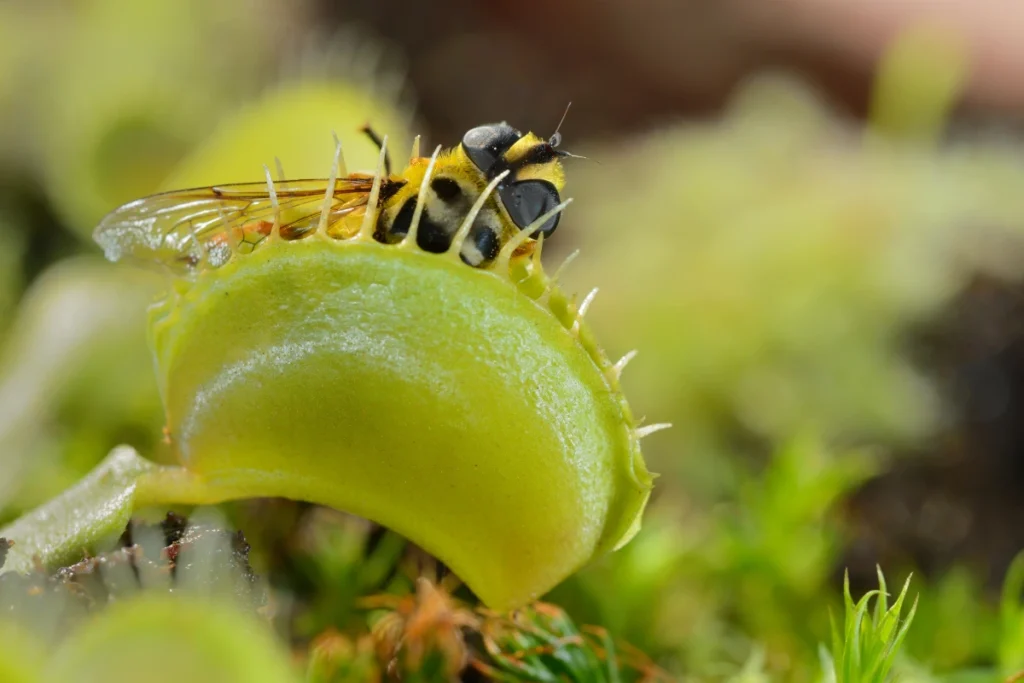
One of the most common misconceptions about carnivorous plants is that they require regular feeding. In reality, these plants are highly efficient at capturing their own food when grown in the right environment.
Outdoor vs. Indoor Feeding
If your carnivorous plant is kept outdoors, you generally do not need to worry about feeding it. It will naturally catch a variety of insects, including flies, ants, and small beetles. Insects are drawn to the plant’s nectar, and once they step onto the traps, they become a meal for the plant.
For indoor-grown plants, occasional feeding may be necessary, especially if the environment lacks natural prey. However, most homes have small insects like fruit flies and gnats that can serve as a natural food source for the plant. If you notice your plant struggling to catch food indoors, you can occasionally offer it small, live insects such as flightless fruit flies or dried mealworms.
Avoid Overfeeding
While it may be tempting to feed your carnivorous plant, doing so regularly can be counterproductive. Overfeeding can exhaust the plant’s traps and reduce its overall vitality. Most species only need to catch an insect every few weeks to get the nutrients they need.
No Need for Fertilizers
Carnivorous plants have evolved to thrive in nutrient-poor soils, which is why they have developed their insect-catching abilities. Using fertilizers can be harmful and even fatal to these plants. The chemicals and nutrients found in standard fertilizers can overwhelm their delicate root systems and lead to plant death.
If you want your plant to thrive, avoid all commercial fertilizers and let nature take its course. When given the right light, water, and humidity, your carnivorous plant will take care of its own nutritional needs naturally.
By following these guidelines, you can ensure that your carnivorous plants remain healthy, strong, and able to capture their own food, just as they would in the wild.
6. Understand Dormancy (Winter Resting Period)
Some carnivorous plants experience a dormancy period during winter, which many beginners mistakenly interpret as the plant dying. This is a natural process that helps the plant conserve energy for the upcoming growing season.
Which Plants Need Dormancy?
-
Venus Flytrap & Sarracenia: These plants require a 3-4 month dormancy period with temperatures ranging between 35-50°F (2-10°C). During this time, they stop producing new growth, and some leaves may turn brown and die back. This is completely normal and not a sign of ill health.
-
Tropical species (Nepenthes, some Sundews & Butterworts): These plants do not require dormancy, as they originate from warm, humid environments where conditions remain stable year-round.
Caring for Dormant Carnivorous Plants
During dormancy, reduce watering but do not let the soil dry out completely. Keep the soil slightly moist to prevent dehydration. For outdoor plants, allow them to remain outside unless temperatures drop below freezing for extended periods, in which case you can move them to an unheated garage or basement. If growing indoors, placing them in a cool location with minimal light, such as a windowsill in a cold room, can simulate dormancy conditions.
Once the dormancy period ends in early spring, you will notice new growth emerging, signaling the plant is ready to resume its active growth phase. At this point, gradually increase watering and ensure the plant receives adequate sunlight to promote healthy development.
7. Maintain High Humidity Levels
Carnivorous plants aren’t just picky about soil and water—they also love a humid environment. Most species, especially tropical ones like Nepenthes (pitcher plants) and Sundews, thrive in humidity levels between 50-80%. If the air is too dry, their leaves can become crispy, their traps may stop functioning, and overall growth will suffer.
To create the perfect humid habitat, try one (or a combination) of these methods:
-
Use a humidity tray: Place a shallow dish filled with pebbles and water beneath the plant. As the water evaporates, it increases the moisture in the air around the plant.
-
Grow them in a terrarium or greenhouse: This helps trap humidity and provides a stable environment, especially for tropical varieties.
-
Mist regularly (but don’t overdo it!): Light misting can temporarily boost humidity, but too much can encourage mold or fungus. Morning misting is best to allow leaves to dry during the day.
If you live in a dry climate, consider placing your carnivorous plant in a bathroom or kitchen, where humidity naturally tends to be higher.
8. Repot Only When Necessary – Less is More!

Carnivorous plants are not fans of frequent repotting, so only do it when absolutely necessary. Typically, this means every 1-2 years, when the soil starts breaking down, the plant outgrows its pot, or you notice mold or algae forming in the soil. When repotting, always use the same nutrient-free carnivorous plant mix (such as sphagnum moss and perlite) and be as gentle as possible with the roots. Disturbing them too much can cause stress and slow growth.
9. Shield Outdoor Carnivorous Plants from Extreme Weather
If you’re growing carnivorous plants outdoors, keeping an eye on the weather is crucial for their survival. During hot summers, provide partial shade to prevent sunburn or dehydration. In winter, cold-hardy varieties like Venus Flytraps and Sarracenia can tolerate frost, but heavy snow or prolonged freezing may require additional protection, such as mulch or an unheated greenhouse. For areas with frequent heavy rain, make sure your plants have excellent drainage to prevent root rot. The right care will ensure they thrive in their natural seasonal cycles.
10. Be Patient – Slow and Steady Wins the Race!

Carnivorous plants don’t grow as quickly as your average houseplant, so patience is key. It can take weeks for a Venus Flytrap to develop new traps or months for a Nepenthes to form a mature pitcher. Instead of expecting rapid growth, focus on your plant’s overall health. Signs of a thriving carnivorous plant include vibrant colors, responsive traps (for flytraps and sundews), and slow but steady growth.
Final Thoughts
Growing carnivorous plants is an exciting and rewarding experience—if you follow the right care tips! By providing the right soil, water, light, and humidity, you’ll enjoy healthy, thriving plants for years to come.
Got more questions? Check out these FAQs:
1. How often should I water carnivorous plants?
Most carnivorous plants need consistently moist soil, but that does not mean they should be sitting in water all the time. It is important to maintain a balance—never let them dry out completely, but avoid waterlogging their roots, which can lead to rot. The best method is to use distilled water or rainwater and keep the soil damp without it being excessively wet.
2. Can I grow Venus Flytraps indoors?
Yes, Venus Flytraps can be grown indoors, but they require direct sunlight for at least six hours a day. If natural sunlight is not sufficient, full-spectrum LED grow lights can be used to replicate the necessary light conditions. Without proper lighting, the traps may not develop properly, and the plant may weaken over time.
3. Why is my carnivorous plant turning brown?
If your plant is turning brown, there could be multiple reasons. Dormancy is a natural process for certain species like the Venus Flytrap and Sarracenia, during which older leaves die off in the winter. However, browning can also be caused by overwatering, underwatering, excessive sun exposure, or poor water quality. If you notice widespread browning outside the dormancy period, evaluate your care routine and adjust accordingly.
4. Do I need to fertilize carnivorous plants?
No, carnivorous plants obtain all their essential nutrients from the insects they trap. Fertilizing them can be harmful because their roots are not adapted to absorbing nutrients from soil like other plants. If you want to supplement their diet, feeding them small live insects like fruit flies or dried mealworms once in a while can be beneficial, especially if they are kept indoors where they cannot catch prey naturally.
5. Can I touch the traps of my Venus Flytrap?
Although it might be tempting to trigger the traps with your finger, it is not recommended. Each trap can only close a limited number of times before it dies and is replaced by new growth. Touching the traps unnecessarily can waste the plant’s energy and reduce its efficiency in catching real prey. It is best to let it function naturally and only feed it when necessary.
6. How do I know if my carnivorous plant is healthy?
A healthy carnivorous plant should display vibrant colors, active trapping mechanisms, and steady growth. If the leaves are turning yellow, traps are failing to close, or new growth appears weak, it may indicate a problem with light exposure, water quality, or soil conditions. Regular monitoring and adjusting the care routine as needed will help maintain plant health.
7. What should I do if my plant stops catching insects?
If your plant is no longer catching insects, check its overall health. Poor lighting, lack of humidity, or dormancy could be factors. If the plant is otherwise healthy, manually feeding it small, soft-bodied insects can help supplement its diet.
Growing carnivorous plants is an exciting and rewarding hobby. By following these essential care tips and troubleshooting common issues, you can enjoy these unique and fascinating plants for years to come.
Related Items for you!


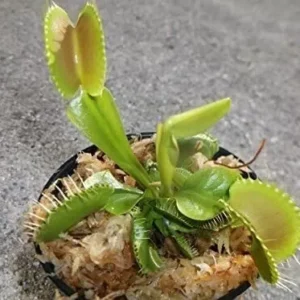
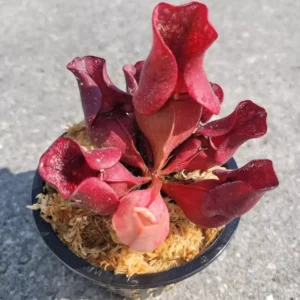
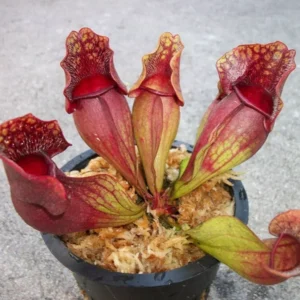
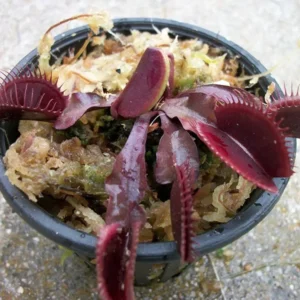
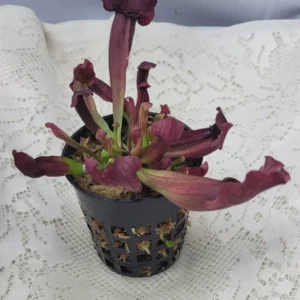
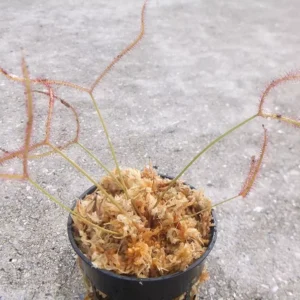
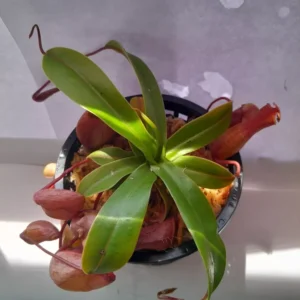
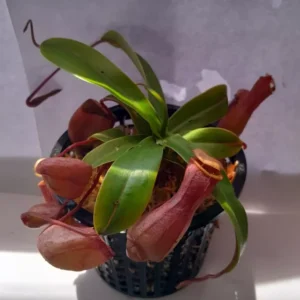
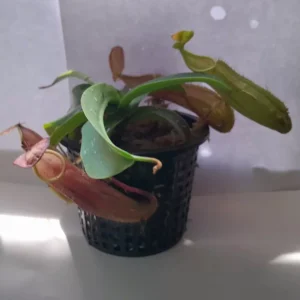
7 Vegetables to Plant in December for a Bountiful Winter Harvest
Winter gardening is a challenge many new gardeners shy away from. But if you’re among [...]
Dec
9 Common Christmas Cactus Problems and How to Fix Them
Have you ever walked past your Christmas cactus and wondered why it suddenly looks sad? [...]
Nov
Swedish Ivy Care: How to Grow a Healthy, Thriving Plant
Have you ever looked at your Swedish Ivy and wondered why the leaves are turning [...]
Nov
Avoid These 10 Garlic Planting Mistakes for Bigger, Healthier Bulbs
Growing garlic at home is one of the most satisfying things a gardener can do [...]
Nov
How to Prevent Christmas Cactus Bud Drop: Tips for a Healthy Bloom
Have you ever noticed your beautiful Christmas cactus (Schlumbergera) starting to lose its buds just [...]
Nov
Discover 7 Stunning Types of Night-Blooming Cereus
Have you ever waited for a flower that only opens at night and then disappears [...]
Nov